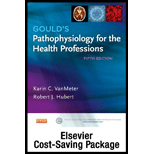
To describe: The various causes of vomiting and vomiting process.
Concept introduction:
Explanation of Solution
Vomiting is a common indicator of digestive or gastrointestinal disorders and also considered as a part of body’s defense to remove noxious substances from the body. It can be taken into account for the diagnosis of disease by determining the characteristics of the vomitus and the vomiting patterns. Vomiting occurs when the chyme (partially digested food with gastric secretions) is forcefully expelled from the stomach or sometimes from the intestine to mouth.
Various causes of vomiting are as follows:
- Expansion (or enlargement) or irritability in the digestive tract stimulates and activates the vomiting center in the medulla and causes vomiting.
- Unpleasant smell or sights or ischemic response stimulate various parts of the brain to activate the vomiting center.
- Motion sickness
- Pain or stress
- Sudden projectile vomiting (without previous nausea or food intake) occurs when the intracranial pressure in the brain increases.
- Sometimes drugs, toxins, and other chemicals stimulate the chemoreceptor trigger zone present in the medulla.
The process of vomiting:
The process of vomiting starts by taking a deep breath. Subsequently, epiglottis is closed and soft palate muscles of the mouth are raised. To reduce the risk of aspiration of vomitus into the lungs, respiration process is ceased for a while. Otherwise, there is a high chance of vomitus to get into the lungs and cause inflammation and obstruction of airways. Gastroesophageal sphincter muscles get relaxed and abdominal muscles are contracted to squeeze the stomach against the diaphragm. This force out the gastric contents upward and out from the mouth. Reverse motion of peristaltic waves of the proximal duodenum and antrum promotes the expulsion of stomach contents. Before the process of complete vomiting, retching may occur. Retching is the process in which the chyme ascends in the esophagus but then falls back into the stomach.
Want to see more full solutions like this?
Chapter 17 Solutions
Pathophysiology Online for Gould's Pathophysiology for the Health Professions (Access Code and Textbook Package), 5e
 Phlebotomy EssentialsNursingISBN:9781451194524Author:Ruth McCall, Cathee M. Tankersley MT(ASCP)Publisher:JONES+BARTLETT PUBLISHERS, INC.
Phlebotomy EssentialsNursingISBN:9781451194524Author:Ruth McCall, Cathee M. Tankersley MT(ASCP)Publisher:JONES+BARTLETT PUBLISHERS, INC. Gould's Pathophysiology for the Health Profession...NursingISBN:9780323414425Author:Robert J Hubert BSPublisher:Saunders
Gould's Pathophysiology for the Health Profession...NursingISBN:9780323414425Author:Robert J Hubert BSPublisher:Saunders Fundamentals Of NursingNursingISBN:9781496362179Author:Taylor, Carol (carol R.), LYNN, Pamela (pamela Barbara), Bartlett, Jennifer L.Publisher:Wolters Kluwer,
Fundamentals Of NursingNursingISBN:9781496362179Author:Taylor, Carol (carol R.), LYNN, Pamela (pamela Barbara), Bartlett, Jennifer L.Publisher:Wolters Kluwer, Fundamentals of Nursing, 9eNursingISBN:9780323327404Author:Patricia A. Potter RN MSN PhD FAAN, Anne Griffin Perry RN EdD FAAN, Patricia Stockert RN BSN MS PhD, Amy Hall RN BSN MS PhD CNEPublisher:Elsevier Science
Fundamentals of Nursing, 9eNursingISBN:9780323327404Author:Patricia A. Potter RN MSN PhD FAAN, Anne Griffin Perry RN EdD FAAN, Patricia Stockert RN BSN MS PhD, Amy Hall RN BSN MS PhD CNEPublisher:Elsevier Science Study Guide for Gould's Pathophysiology for the H...NursingISBN:9780323414142Author:Hubert BS, Robert J; VanMeter PhD, Karin C.Publisher:Saunders
Study Guide for Gould's Pathophysiology for the H...NursingISBN:9780323414142Author:Hubert BS, Robert J; VanMeter PhD, Karin C.Publisher:Saunders Issues and Ethics in the Helping Professions (Min...NursingISBN:9781337406291Author:Gerald Corey, Marianne Schneider Corey, Cindy CoreyPublisher:Cengage Learning
Issues and Ethics in the Helping Professions (Min...NursingISBN:9781337406291Author:Gerald Corey, Marianne Schneider Corey, Cindy CoreyPublisher:Cengage Learning





